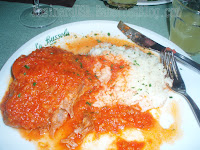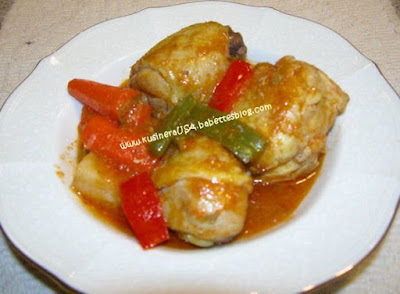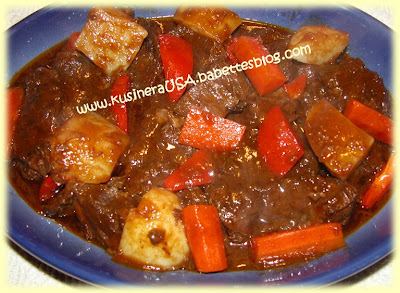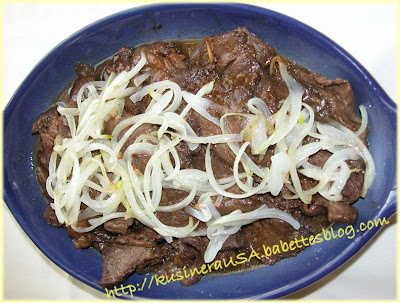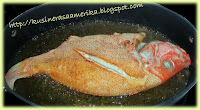Chicken, Chorizo and Shrimp Paella
16 December 2008 Labels: Chicken, Entrees, Paella, Rice, Shrimps 8 comments
The recipe I used didn't call for shrimps but I added it anyway since I love it and I'm the cook. LOL If you are adding shrimps, do it at the last 5 or so minutes of cooking, depending on the size of your shrimps. If you'll notice in the photo, only one half of the Paella has green peas, that's because my husband hates it while I like it. LOL The recipe also calls for roasted chicken but if you don't have left-over chicken, you can use fresh chicken. I put salt and pepper on fresh chicken and fry it it a little oil.
Here is the recipe I used from Epicurious.
Epicurious September 1999
Yield: Makes 4 to 6 servings
1 tablespoon vegetable oil
14 ounces chorizo, cut into 1/2 inch slices on the diagonal
1 small onion, chopped
1 red bell pepper, chopped
2 cloves garlic, chopped
1/4 teaspoon pimenton or paprika
2 cups short- or medium-grain rice
1 pinch saffron threads
2 bay leaves
4 cups chicken stock
1 1/4 pounds roast chicken (meat from 3-pound chicken skinned, deboned, and torn into chunks)
1/2 cup frozen peas
1 tomato, chopped
Coarse salt and freshly ground black pepper to taste
Heat oven to 400°F. Heat oil in a large casserole or paella pan over high heat. Add chorizo and cook until browned and fragrant, about 1 minute. Add onion, red bell pepper, and garlic. Cook, stirring occasionally, until vegetables are tender, about 3 minutes.
Add rice (medium or short grain rice), pimenton, saffron, and bay leaves. Stir to combine and coat the rice, about 1 minute. Add chicken stock and bring to a boil. Add roast chicken, frozen peas, and tomato; stir to combine.
Transfer skillet to oven. Cook uncovered until rice is tender and no liquid remains, about 20 minutes. Remove from the oven. Fluff with a fork and serve immediately.
SUBSCRIBE BY EMAIL HERE
Read full post >>


